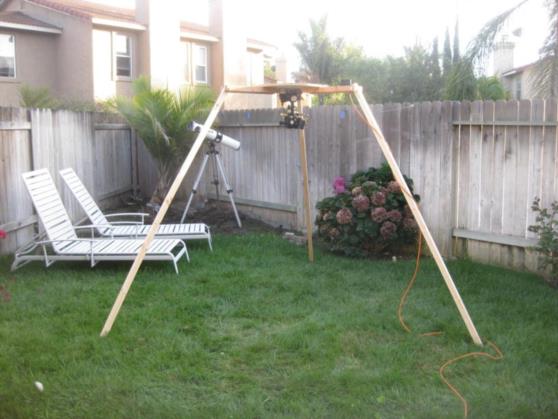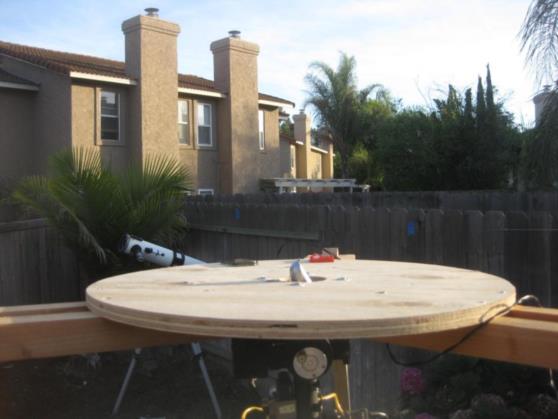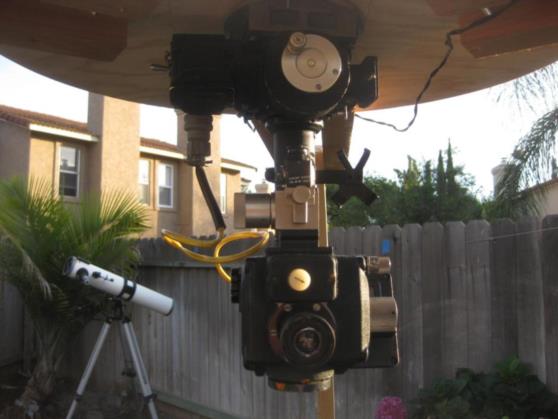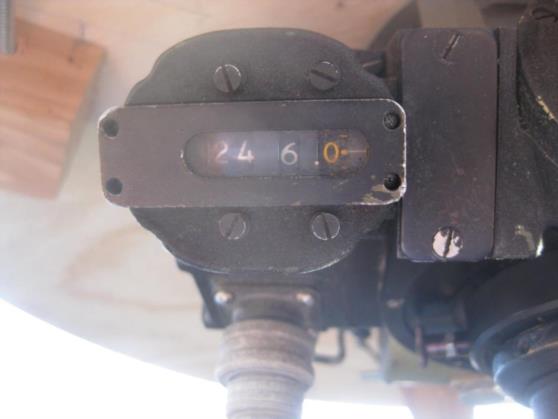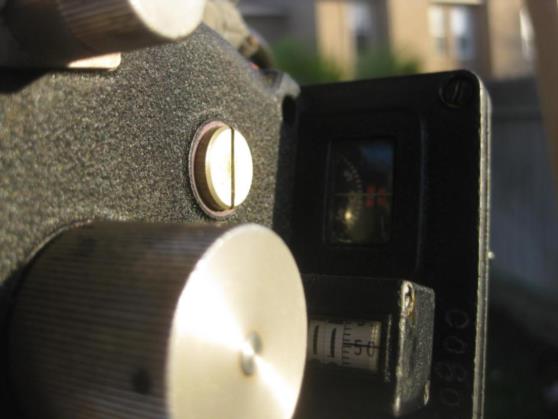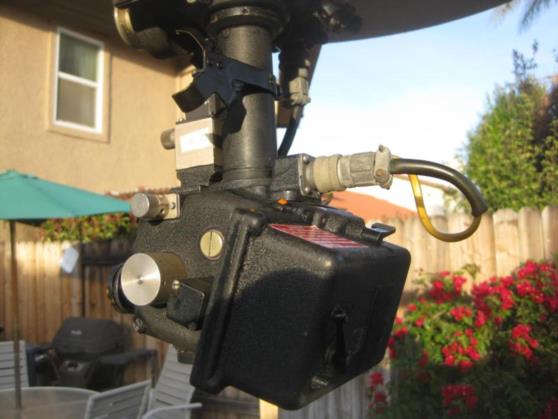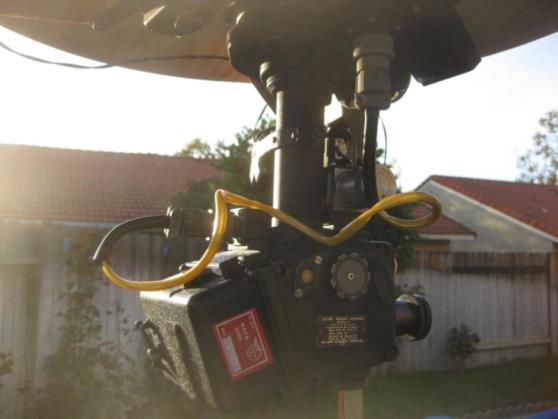
NavList:
A Community Devoted to the Preservation and Practice of Celestial Navigation and Other Methods of Traditional Wayfinding
Kollsman periscopic sextant mount
From: Gary LaPook
Date: 2010 Oct 27, 01:41 -0700
From: Gary LaPook
Date: 2010 Oct 27, 01:41 -0700
I just finished reading Flying From the Black Hole
documenting the navigator's job on a B-52, which I heartily
recommend. I decided to finally set up my sextant mount so that I
could see what it was like to take sights this way. I have attached
several photos showing the set up which I made with some two by twos
and a round plywood disk. I provide the 28 volts for the lights by
using a sprinkler system transformer, that's the little black box on
top of the stand. Photo 6415 shows the top of the periscope
extending above the fuselage (er, disk.) Photo 6416 shows the
azimuth crank with the azimuth readout window to the left of the
crank. Photo 6417 shows the azimuth counter with the azimuth of the
sun, 246.0° entered. Photo 6423 shows the power cable conecting the
sextant to the mount. Photo 6428 is a view through the eyepiece
showing the sun (through a green filter) near the left edge of the
bubble. Below the bubble is the "inverse relative bearing scale"
showing the hairline on 164.5° (I had trouble taking the picture
through the eyepiece.) You set in the precomputed altitude into the
sextant and you set the azimuth of the body into the azimuth counter
and then turn the sextant until the aircraft's heading is under the
hairline and the body will be in the field of view. By aligning the
body with the hairline you can read out the exact heading of the
aircraft and so provide a check of the aircraft compass' deviation.
This is all the view a B-52 navigator would have of the sky so it
was absolutely essential that the data be precomputed so the the
sextant could be aimed in the right direction or else it would be
almost impossible to find the star he needed to shoot. (My sextant
mount was set up, randomly, on a heading of 165° True which I found
out by lining up on the sun.)
gl
gl
